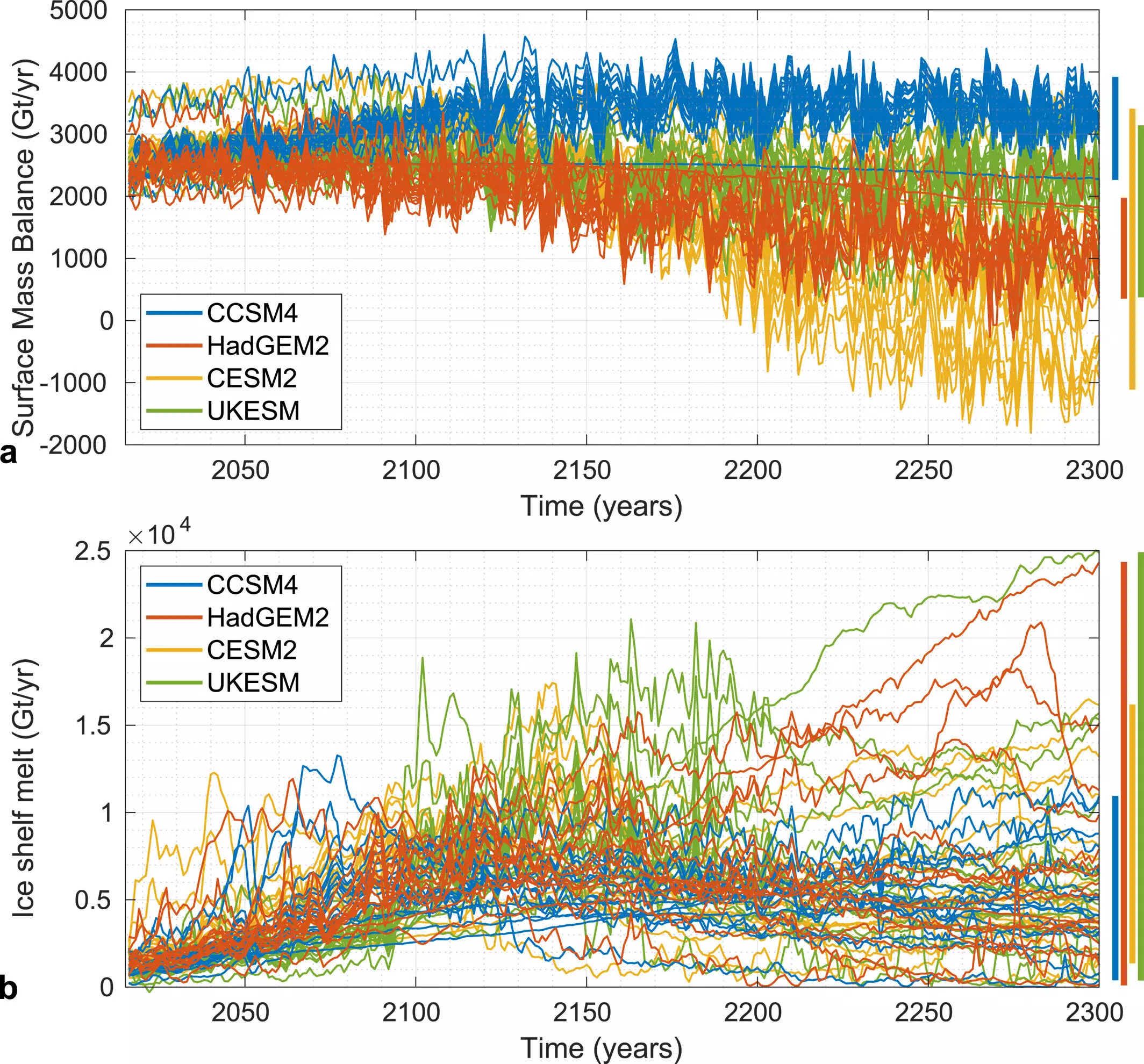In a groundbreaking study spearheaded by Dartmouth College in collaboration with over fifty climate scientists from around the globe, researchers have provided unambiguous predictions regarding the effects of carbon emissions on Antarctica’s ice sheets over the next three centuries. Published in the journal Earth’s Future, the study reveals an alarming consensus among 16 distinct ice-sheet models indicating a gradual increase in ice loss throughout the 21st century. However, this apparent agreement dissipates into uncertainty as the century nears its conclusion, underscoring the dire need for a shift in how climate-related discussions are approached, especially concerning long-term projections.
The study’s first author, Hélène Seroussi, highlights the common oversight in policymaking—where the focus primarily resides on scenarios up to the year 2100, leaving a significant knowledge gap regarding the following centuries. This paradigm, favoring short-term forecasts, could jeopardize the lives and environments of future generations. The study serves as a stark reminder that the ramifications of climate change are not merely immediate but extend well beyond current planning horizons.
While the study’s projections indicate that Antarctica’s glaciers will experience an incremental retreat through the 21st century under existing emission levels, there is a dramatic shift post-2100. According to these models, ice in most of Antarctica’s western basins is predicted to undergo a rapid retreat, which could escalate global sea levels by as much as 5.5 feet by 2200. The implications are staggering, with some projections predicting a near-total collapse of the Antarctic ice sheet by the year 2300.
The researchers explored both high and low-emission scenarios to assess their impact on future sea levels. Dartmouth professor of earth sciences and co-author Mathieu Morlighem notes that while today’s emissions may only slightly impact projections for this century, the disparity between the outcomes of high- vs. low-emission pathways becomes stark and troubling as time goes on. This conclusion reinforces the urgency for immediate action against carbon emissions, as the potential loss of the Antarctic ice sheet could irrevocably alter global sea levels.
An interesting aspect of the study is the variability in timing regarding when Antarctica’s glaciers will begin to recede, depending heavily on the ice-flow model applied. Notably, though the models differ in their timelines, they are united in their prediction of the speed with which ice loss can occur once the initial retreat begins. Researchers agree that the retreating glaciers, once accelerated, cannot be stopped or slowed down. Seroussi emphasizes that significant areas, particularly in West Antarctica, face the risk of complete collapse before the year 2200.
However, the timing of these catastrophic changes is still shrouded in uncertainty, primarily hinging on the future trajectory of greenhouse gas emissions. Therefore, as the clock ticks, the ramifications of inaction become increasingly dire. The message is clear: immediate and decisive reductions in emissions are paramount to stave off a future where vast portions of the Antarctic ice are lost.
The ramifications of this study extend beyond projections alone; it paves the way for future collaborative efforts that could enhance scientific understanding and address discrepancies in climate modeling. The findings are significant not only for Antarctica but also for other vulnerable regions, including the Greenland ice sheet. By pooling resources and focusing research on areas with the most variability in projections, scientists can better comprehend potential outcomes and work towards strategies for mitigation and adaptation.
The Dartmouth study serves as both a wake-up call and a roadmap for policymakers and climate scientists alike. The implications of their findings could reshape the narrative around climate change, emphasizing the urgent need to consider not just the present impacts but also the long-distance consequences of today’s decisions. As the global community continues to grapple with the challenges posed by climate change, it is critical to heed these warnings to protect the planet and future generations from irreversible damage.

